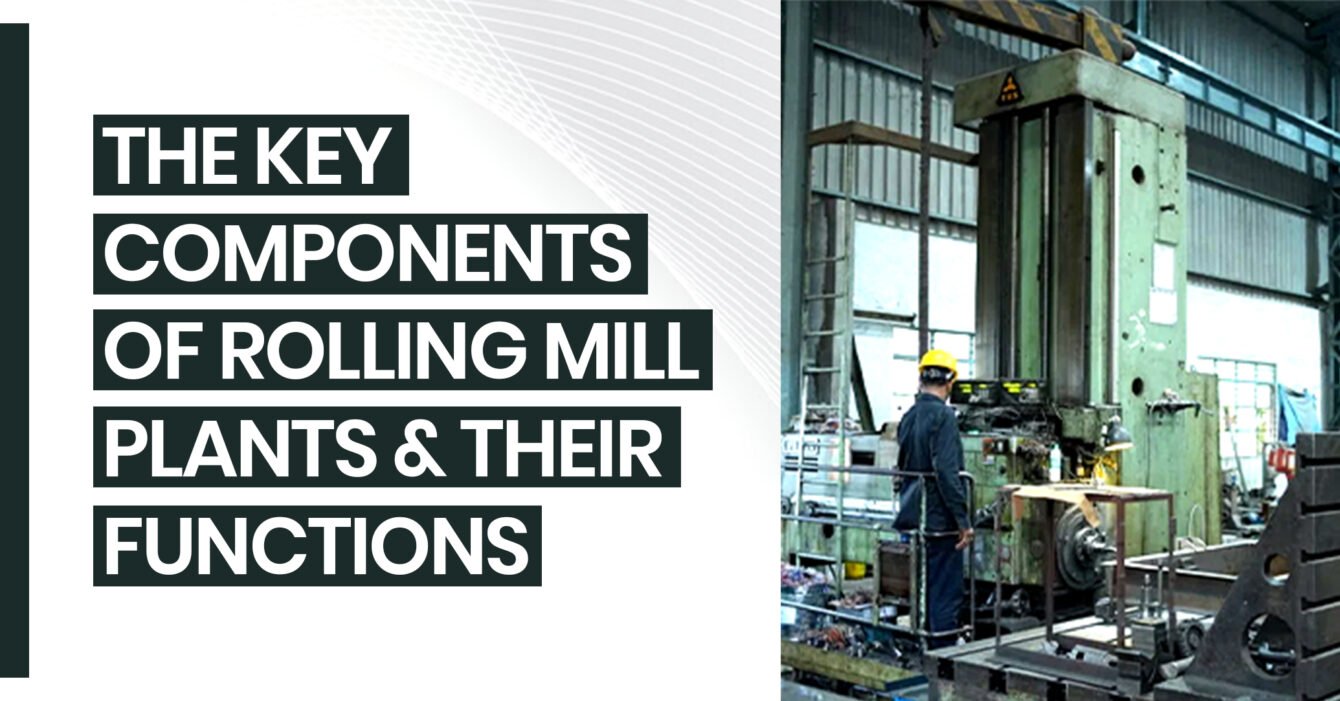When you walk through a fully operational steel mill, you’re essentially stepping into the heart of industrial engineering. Rolling Mill Plants are more than just a massive structure churning out steel – it’s a precisely coordinated ecosystem of machines, systems, and human expertise, each playing a vital role in turning raw materials into finished products.
At K.N. Engineering Works, we’ve spent decades understanding and perfecting every inch of this process. As a trusted name among steel plant equipment manufacturers in India, we don’t just deliver machinery – we deliver reliability, precision, and performance.
Let’s break down the key components of Rolling Mill Plants and explore what they actually do.
#1 – Reheating Furnace
Before steel billets or blooms can be shaped, they must first be heated to the right temperature. That’s where the reheating furnace comes in.
Function:
- Heats raw billets or ingots to rolling temperature.
- Ensures uniform heat distribution, which is critical for consistent rolling output.
- Works on oil, gas, or coal-based fuel, depending on plant design.
At K.N. Engineering Works, our furnaces are engineered for maximum fuel efficiency and even heat penetration, reducing scale loss and improving overall rolling quality.
#2 – Rolling Mill Stands
This is where transformation really begins. Rolling Mill Plants apply enormous pressure to reduce the thickness and shape the steel.
Function:
- Contains rolls that press and shape the hot steel.
- Available in different configurations – horizontal, vertical, housing-less, and more.
- Each stand gradually reduces the cross-section of the steel, making it longer and thinner.
What makes our mill stand out? It’s the robust build, easy adjustment, and minimal maintenance requirements. Each one is custom-built for client needs – no generic machines here.
#3 – Shearing Machines
Once steel is rolled, it must be cut to the desired length or trimmed for quality. Shearing machines take on this job with precision.
Function:
- Crop shears cut off unwanted ends.
- Flying shears cut steel at high speeds during the rolling process.
- Cold shears are used for the final length-cutting of cooled material.
Hydraulic and mechanical options are available, and our team ensures each one is synchronised with plant speed and load capacity.
#4 – Pinch Rolls and Tail Brakers
Not every component is dramatic – some are quietly critical. Pinch rolls and tail breakers fall into that category.
Function:
- Pinch rolls grip and guide the steel strip along the rolling line.
- Tail brakes slow down or stop the strip after rolling to prevent entanglement.
- Protect equipment and ensure smooth product flow.
These are key to handling high-speed rolled material without damage or downtime. Precision here means fewer production halts.
#5 – Cooling Beds
After rolling, steel needs controlled cooling before further handling. That’s where cooling beds play their part.
Function:
- Receive hot rolled material and allow it to cool gradually.
- Align and collect bars or sections for bundling.
- Prevent warping or surface cracks by ensuring even cooling.
Our cooling beds are designed for both light and heavy-duty applications, with rugged build quality and automation for bar counting and collection.
#6 – Gearboxes
Mill operations rely on power transmission. Gearboxes manage torque and speed, aligning mechanical energy with specific tasks.
Function:
- Transmit power from motors to rolling equipment.
- Maintain speed and torque ratios for efficient performance.
- Designed to withstand high loads and continuous operation.
K.N. Engineering Works offers customised gearboxes – from pinion gearboxes to universal joint spindles – built to meet the specific demands of rolling mills.
#7 – Roller Tables and Conveyors
You’ll often find roller tables quietly doing the heavy lifting – literally and figuratively.
Function:
- Transport material between equipment during rolling.
- Synchronise with rolling speed to avoid interruptions.
- Available as hot or cold roller tables, depending on the process stage.
Designed for automation, K.N. Engineering Works roller tables reduce manual intervention and improve plant efficiency.
#8 – Electrical & Control Panels
Modern steel plants are incomplete without precise electronic control. Automation ensures consistency, efficiency, and safety.
Function:
- Manage speed, temperature, and load of all mechanical systems.
- Integrate SCADA/PLC systems for plant-wide monitoring.
- Help reduce human error and production inconsistencies.
Our panels are custom-integrated with each client’s workflow and offer intelligent diagnostics for smoother operations.
Why It Matters – A Summary
| Component | Function & Benefit |
| Rolls & Backup | Shape Steel, Prevent Deflection, Ensure Quality |
| Housing & Frame | Provides Rigidity, Structural Support, Quick Maintenance |
| Chocks & Bearings | Maintain Alignment & Smooth Rotation under Load |
| Adjustment Mechanism | Control Product Dimensions with Precision |
| Drive Systems | Deliver Steady Torque & Speed Consistency |
| Roll Balancing | Prevent Vibration, Protect Bearings, Ensure Even Wear |
| Automation Features | Minimise Downtime, Improve Uptime, Support Fast Roll Changes |
| Precise Geometry Handling | Maintain Accuracy, Extend Equipment Life |
Final Thoughts
Mill plants are not just built – they’re engineered. Each piece of gadget needs to work in harmony with the next to ensure productivity, great, and protection. Whether it’s the heavy-responsibility rolling stands or the unseen electric panels, every part has a distinct position to play.
At K.N. Engineering Works Engineering Works, we don’t just manufacture machinery. We help build plants that perform seamlessly under pressure with technology that lasts and support that stays.
If you’re building or upgrading your steel plant, ensure you start with the right components and the right partners.
Ready to power your mill with precision? Let’s talk.









